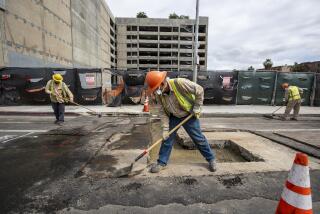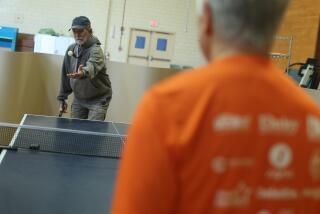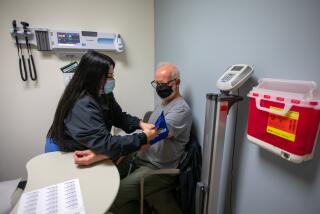Open the discussion on dying
- Share via
Last week, my dad was taken on a practice run from his Northern California nursing home back to his house. He’d had recent hip surgery, and the idea was that if he could master the challenge of getting in and out of the car and the wheelchair, he could leave the facility and begin hospice care in his own home.
But first he had to get there. You go down by the high school, my dad told his driver, an aide from the nursing center. The school, which my dad attended 65 years ago, was in precisely the wrong direction. But he told the driver to keep going, directing him past the primary school and toward the San Joaquin River, also in the wrong direction.
The confusion was cleared up with a call to my mother, who was waiting for them in the house that she and my father have lived in for the last half-century. My father hadn’t remembered how to get to that house, but he had remembered how to get to the part of town where he had grown up, with five brothers and sisters, all of them now long gone. It was as though his mind had worked an elegant trick, guiding him back to where his life began, and, in a sense, truly taking him home.
In the past year, my dad has found himself in a lot of unexpected places — physically and emotionally — as he nears the end of life. And he’s taken the family along with him. It’s amazing to me now, looking back, how little I really thought about the end of life, other than its inevitability. I’m not alone.
About 75 million boomers are approaching old age, and it’s no wonder they’re beginning to have questions about the way we die, even if they’re not sure how to raise them. My dad has always been one to start conversations with strangers, and a lot of people who’ve been reading about his challenges have wanted in on this one.
Over the past year I’ve had the privilege of meeting and talking to people as they approach the great unmentionable with varying degrees of fear and courage, resistance and surrender. Many more have shared the very personal details of their own journeys at http://vinapk.com/lifeanddeath, offering advice on the many medical, moral and legal end-of-life quandaries.
And it turns out we have a lot to learn from one another.
I’m thinking back now on my friend Lawrence Tolliver, a barber whose own son died of cancer this year just before my father turned critically ill. I accompanied Tolliver to a mortuary, where he bravely gave his son a proper haircut for his funeral. I’ll never forget Tolliver’s loving tribute from a church pulpit, celebrating his namesake’s life and telling mourners his son’s suffering had come to a merciful end.
In Los Feliz, Freddie Ramos, who decided against more chemo to treat his advancing cancer, told me that “living in fear of death is no way to live.” And in Santa Barbara, Colleen Kegg lamented the absence of a death with dignity law in California and discussed her plan to starve herself when a terminal neurological disorder advances. “I am a strong believer in the fact that life is about quality, not quantity,” she wrote in a statement documenting her end-of-life wishes. In Santa Clarita, as he made house calls, geriatric doctor Gene Dorio told me of his deep respect for his patients’ choices — those who want to let go and those who insist on fighting for every breath.
What I’ve learned along the way is that we have to get past the fears and cultural taboos that prevent us from discussing death with loved ones. We need to make our wishes known in advance healthcare directives, sparing friends and family the psychological trauma of impossibly difficult decisions. We need more information on end-of-life choices and broad reforms of Medicare, which gladly pays for the tools of slow suffering in terminal patients — feeding tubes, hip replacements, etc.— but is stingier about paying for palliative care despite lower costs and higher patient satisfaction.
One of the great tragedies and cruel ironies of American politics is that we stand no chance of hearing workable solutions or honest discussion from candidates in an election year. So a popular demand for policy changes may be the only hope, and I invite you to make yourself heard at The Times’ Life and Death page. I’m sure my dad would appreciate your contribution, given his genetic, long-standing lack of faith in the ability of Congress or the White House to lead the way on matters of great importance.
I flew north to see him Monday, and hospice care has gotten off to a rough start. Not so much for him; he’s thrilled to be out of hospitals and nursing homes and back in his humble castle. But my mother and sister are the primary caregivers, and the physical and emotional demands are wearing them down. I worry as much now about their health as I do about my father’s many life-threatening conditions. The task this week will be figuring out whether to hire backup help when hospice staff isn’t there or to instead move him into assisted living, which he strongly opposes.
You see a once-vital man this compromised and your heart aches.
Maybe the last gift you get from someone you love, before they’re gone, is a greater appreciation of life. Freddie Ramos put it perfectly. “Living in fear of death is no way to live.”
On Monday, my family did what we’ve always done at this time of year. We had a nice meal, put on some holiday music and played cards. A part of my father was there with us. Another part of him may have been wondering how to get home.
To read more of Steve Lopez’s columns on this subject or to share your stories about the end of life, go to latimes.com/lifeanddeath.
More to Read
Sign up for Essential California
The most important California stories and recommendations in your inbox every morning.
You may occasionally receive promotional content from the Los Angeles Times.











